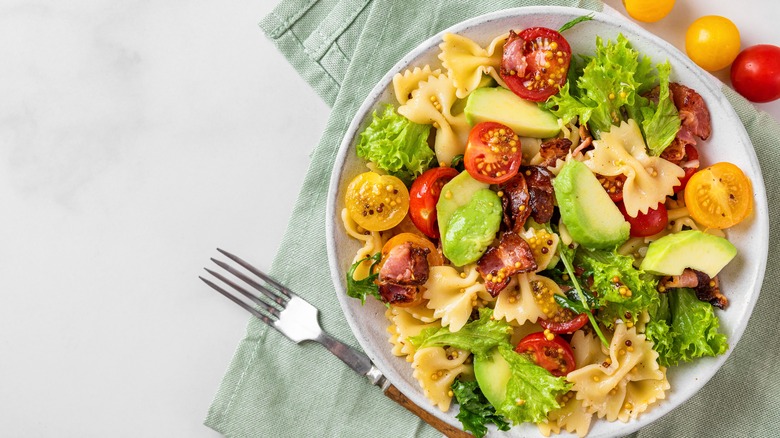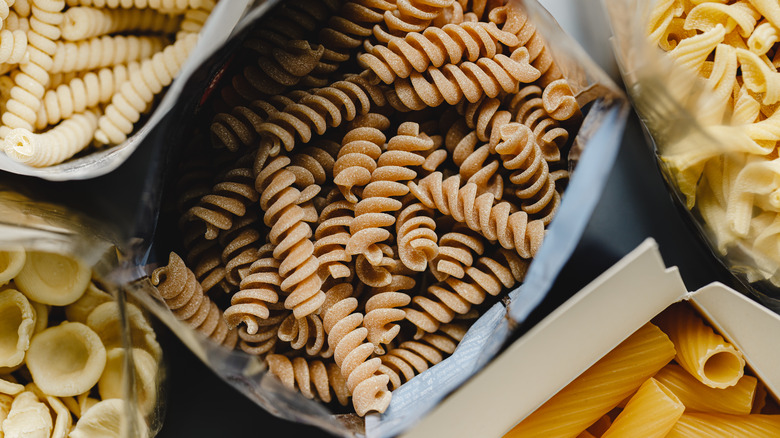Why You Should Avoid Using Large Noodles In Cold Pasta Salad
A good pasta salad is all about the details. If you find yourself unhappy with a recipe no matter what medley of ingredients and dressings you add, then you might want to take a closer look at the type of pasta you're working with. Much like how cooking time can massively affect the outcome of a pasta salad recipe, so too can using the wrong type of noodle. To stop yourself from ever whipping up a lackluster pasta salad, stay away from huge and hefty noodles.
Size should be the biggest criterion when choosing noodles for a pasta salad. The reason is that pasta that's too big to devour in a single bite can complicate the dining process. In addition to being harder to spear, oversized noodles also make chewing a more laborious process. Plus, pasta bearing gigantic proportions can detract from the salad's other ingredients, impacting the recipe on a visual, textural, and gustatory level.
As for specific pasta varieties to avoid, forgo short shapes that boast colossal dimensions like tubular paccheri, pennoni, or calamarate, alongside shelled shapes like conchiglioni or lumaconi. In fact, you might even want to think twice about using smaller yet sizable options like rigatoni. Additionally, don't be tempted by long noodles. While they are leaner, that doesn't mean that tangled strands of capellini, bucatini, or mafalde are any less of a nuisance in pasta salad.
The ideal pasta noodle should be on the smaller side
Rather than craft a pasta salad with enormous noodles, the best policy is to go with more petite varieties. From farfalle to penne to orzo, these modestly-sized noodles are a good starting point. However, because the right noodle should also have favorable attributes like bendability, along with ridges or nooks to absorb dressing, there are better choices. Some of the most suitable noodles include twirly fusilli, spiralized gemelli, or twisted cavatappi.
After selecting the perfect pasta, the next thing to consider is how to prep other salad ingredients for the most balanced result. Variety may be great, but keeping ingredients roughly the same size will easily allow all flavors to be tasted in a forkful. However, uniformity isn't a steadfast rule. Additions like crunchy raw vegetables, large chunks of charcuterie, or pungently flavored ingredients are best cut into smaller pieces, despite the size of other salad components. After all, keeping flavors in check is just as important in producing a cohesive pasta salad.
Ultimately, size matters when it comes to pasta salad. Although it might take a bit of workshopping to determine the greatest shape for a recipe, one thing is for sure, large pasta noodles are never the move!

